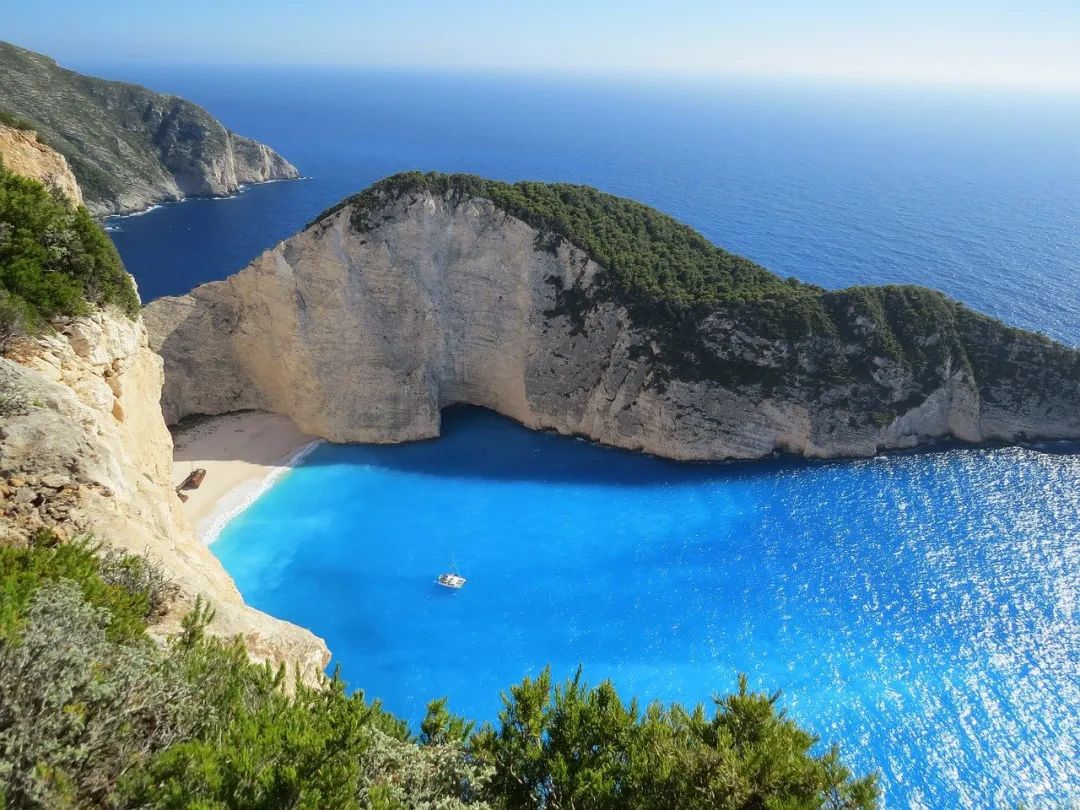中國(guó)歐式小鎮(zhèn)無人問津淪落成鬼城

There’s a town on the outskirts of Beijing thatmight just be the strangest you’ll ever see. The mainstreet looks as if it was based on a child’s crayondrawing—a riotous palette of pinks, blues, andoranges—and the residents are frighteningly still. Infact, most aren’t even real. Instead, the townfeatures such sights as a pair of petrified pigeons,yellow phone booths, and a statue of a sea doggazing from a bridge.
當(dāng)你第一眼看到這個(gè)位于北京郊區(qū)的小鎮(zhèn)時(shí),定會(huì)非常驚訝,一條條商業(yè)街宛若孩子的調(diào)色板,五彩斑斕,而街上的人們,卻舉止僵硬,如同孩子用蠟筆畫畫出來的一般。其實(shí),你所看到的大部分都是假景。鴿子,黃色電話亭,站在橋上凝望的水手這些人造景觀形成了這個(gè)小鎮(zhèn)的獨(dú)特風(fēng)格。
Welcome to “Spring Legend, a mock-Alpine town located in Huairou, a designated green-beltdistrict about 35 miles from Beijing. The town has existed for about five years, but it lackssomething fundamental: residents.
歡迎來到懷柔的“頂秀美泉小鎮(zhèn),這座離北京市區(qū)三十公里左右的歐式小鎮(zhèn),建成已經(jīng)五年,卻缺少了一個(gè)商業(yè)住宅區(qū)最基本的構(gòu)成要素:居民。
Spring Legend has the feel of a dream come true. Entering the town’s German restaurant—outside of which sits a statue of British Prime Minister Winston Churchill enjoying a bronzecigar—tables are set with fine china, wine goblets, silver cutlery, and linen, all neatly laid out fordiners who never arrive. Then, a waitress dressed as a Bavarian fr?ulein appears and inquireshow many there will be for lunch.
踏進(jìn)頂秀美泉小鎮(zhèn),讓人仿佛置身夢(mèng)中,德式餐廳的門口,放置著一尊正在抽煙的英國(guó)首相丘吉爾的銅質(zhì)雕像。餐廳里的桌子上整齊的擺放著精美的瓷器和銀質(zhì)餐具,似乎等待著那些永遠(yuǎn)也不會(huì)光臨的客人。一位年輕的身穿巴伐利亞服裝的服務(wù)員走上前來詢問就餐的客人數(shù)。
The town’s motto is “The Beautiful Legend From the Alps and indeed, compared to thelivability problems of Chinese cities, Spring Legend has a pleasant environment. Tables are setwith fine china, wine goblets, silver cutlery, and linen, all neatly laid out for diners who neverarrive.
頂秀美泉小鎮(zhèn)的口號(hào)是“來自阿爾卑斯的美麗傳說。事實(shí)上,和中國(guó)很多城市的居住環(huán)境比,頂秀美泉小鎮(zhèn)的環(huán)境的確令人心曠神怡。
“We named it Spring Legend because it’s close to the river and has a small creek runningthrough it, explains Liu Xinhu, the chairman of Ding Xiu Zhi Ye (Spring Legend Properties). “It’s extremely beautiful in the spring, too.
頂秀置業(yè)總經(jīng)理劉新虎說,“我們叫它“頂秀美泉小鎮(zhèn)是因?yàn)樗o鄰雁西河畔,內(nèi)有小溪流水。春天的時(shí)候非常的美。“
The town was conceived back in 2007, towards the end of a period of rapid development inBeijing that led to an increase in pollution and, correspondingly, a renewed interest amongcity-dwellers in a serene environment.
小鎮(zhèn)是2007年開始建造的,那時(shí)北京剛剛經(jīng)歷了一段迅速發(fā)展時(shí)期,人口猛增。從而使很多北京市民萌發(fā)了遠(yuǎn)離喧囂的城市,尋求安靜居所的念頭。
Spring Legend is empty for one simple reason: During the week, hardly anyone lives there. Anestimated 80 percent of the town’s homeowners also have apartments in Beijing, and,according to Liu, the general occupancy rate in Spring Legend is only about 60 to 70 percent.Multiple-home ownership among China’s rich is not uncommon; University at Albanyprofessor Youqin Huang has estimated that 15 percent of urban households in the countryown two or more houses.
在他看來,房子空置的主要原因是因?yàn)槠綍r(shí)大家都上班,因此很少有人來居住,他估計(jì)說,頂秀美泉小鎮(zhèn)的80%的戶主在市區(qū)也有房。再加上小鎮(zhèn)的入住率總共也就百分之六七十。在中國(guó),有錢人擁有多套房的現(xiàn)象并不少見。據(jù)奧爾巴尼大學(xué)教授黃友琴估計(jì),中國(guó)有13%的城市家庭至少擁有兩套房。
The nature of property ownership has changed greatly in China. Fifteen years ago, stateworkers (who then comprised much of the population) were assigned basic accommodation.But today, home ownership has become so important that young men struggle to find agirlfriend if they do not own their own home. Buying a place, however, is difficult: Averagesalaries in Beijing top out at about 4, 500 RMB per month (around $750), while the cost of anapartment in the city center is around 43, 000 to 52, 000 RMB per square meter.
中國(guó)的房地產(chǎn)本質(zhì)已經(jīng)發(fā)生了極大的變化。十五年前,城市人口主要由國(guó)企工人構(gòu)成,住房由國(guó)家統(tǒng)一安排分配。現(xiàn)在的年輕人若沒有房子,連對(duì)象都難找,然而,買房卻并不容易,北京人均月工資不超過4500元(折合$750)。而北京市區(qū)房?jī)r(jià)均價(jià)卻在每平方43000元到52000元之間。
Why has China gone mad for housing? With strict capital controls and a state-controlledstock exchange that is volatile and risky, the tangible reassurance of evergreen propertyhas made it a “fungible commodity, in the words of Anne Stevenson-Yang, co-founder ofBeijing-based equities analysis firm J Capital Research. She says that homes are usually leftempty in order to avoid any depreciation in value.
為什么中國(guó)房地產(chǎn)如此火爆?用北京美奇金投資咨詢有限公司的合伙創(chuàng)始人楊思安話來說是因?yàn)樵谥袊?guó),政府對(duì)資金調(diào)控極其嚴(yán)格,而炒股又有很大的風(fēng)險(xiǎn)性。這樣一來,房子就成了具有保障性的投資商品。她認(rèn)為房子空置的主要原因是為了避免貶值。
“Renovation costs are very high, so it makes no sense to rent if you are seeking capitalappreciation, she explains via e-mail. “Remember that apartments here are sold bare,without flooring, ceilings, lighting fixtures or wall tiles. They all need to be installed, adding atleast 20 percent to the cost [and] people expect to ... custom fit the unit.
她在電子郵件中做了這樣的解釋,“重新裝修花費(fèi)太大,所以你想要保值,外租就沒有什么意義了。這里出售的商品房都是沒有地板,天花板,燈具及墻磚的毛胚房,如果裝修,成本至少要增加20%.人們還是希望按照自己的意愿裝修。
This means that even in successful towns like Spring Legend—where a unit costs an average of16, 000 RMB (about $2, 500) per square meter, roughly a third the cost of a typical apartmentin central Beijing—the streets and houses remain lifeless. The owners, says Bianca Bosker,author of Original Copies: Architectural Mimicry in Contemporary China , are “dreaming of whatthey’ll do with the riches they imagine they’ll get when they one day sell them. The likelyanswer? Buy more property. However, “Given how many people have hatched the same ‘getrich quick’ real-estate idea, and how many of China’s gated communities stand empty, bettingon real estate looks increasingly risky.
這就意味著在像丁秀美泉這樣比較成功的樓盤,即使每套房的售價(jià)僅為市區(qū)房?jī)r(jià)的三分,既16000元每平方米,卻依然鮮有人住。《原味復(fù)制——當(dāng)代中國(guó)的建筑模仿》的作者比安斯·博斯克說,這些戶主們夢(mèng)想著有天把手中的房子拋掉就可以發(fā)家致富。真的是這樣嗎?在中國(guó),如果越來越多的人認(rèn)為炒房可以快速致富。購(gòu)買的房子越多,房子的空置率就越高。房地產(chǎn)投資的風(fēng)險(xiǎn)也會(huì)越來越大。
Spring Legend is hardly the only city of its kind. There's also Thames Town, outside Shanghai,which is a $300 million British-style residential complex developed by since-incarceratedShanghai Communist Party boss Chen Liangyu. And north of Beijing in Hebei Province isJackson Hole, a wind-swept Wild West replica featuring neighborhoods called Moose Creek,Route 66, and Aspen Land. When developers previewed Jackson Hole in 2003, buyer interestwas intense. The homes “sold out in record time, says Oregon-based designer Allison Smith,who helped create the settlement. Early investors who purchased an “American villa for arounda quarter-million dollars in 2006 have seen their dreams “triple in value, she estimates.
在中國(guó),像頂秀美泉這樣空置的商業(yè)住宅區(qū)并非個(gè)例。與它類似的還有由現(xiàn)已身陷囹圄的前上海市委書記陳良宇花費(fèi)3億美元打造的英式泰晤士小鎮(zhèn)住宅區(qū),河北的杰克森莊園,原版復(fù)制的美式慕斯溪,66號(hào)公路,阿斯彭度假莊園等等。2003年,杰克森莊園一開盤,就吸引了眾多購(gòu)房者。來自美國(guó)俄勒岡的艾莉森.史密斯是該樓盤的方案設(shè)計(jì)人,她說該樓盤的銷售“創(chuàng)造了歷史記錄。據(jù)她估計(jì),2006年以200萬人民幣購(gòu)買的在這里購(gòu)買的“美式別墅,現(xiàn)在其價(jià)值已經(jīng)漲了三倍。
Jackson Hole bucks the trend: It is a living community, a mix of older families and retireesdrawn by what Smith agrees is a serendipitous confluence of factors—co-operativedevelopers, clever marketing, and a great location. But Smith fears there’s a downside to thespeculation. “At this point, the Chinese are in such a rush to buy everything, it may not holdits value down the line, she says. “Jackson Hole doesn’t have that problem; people want tostay there. People want to live there. We've done something positive—it’s not just for themoney."
杰克森度假山是一個(gè)逆潮流增長(zhǎng)的案例:它是一個(gè)充滿生機(jī)的社區(qū),史密斯認(rèn)為它的成功是由幾個(gè)因素綜合構(gòu)成的。如開發(fā)商鼎的力合作,獨(dú)特場(chǎng)營(yíng)銷手段及優(yōu)越的地理位置等,從而能夠吸引眾多的老年家庭及退休家庭。但史密斯也擔(dān)心這種投資方式已經(jīng)在走下坡路了。“這時(shí)候中國(guó)人還熱衷于到處買房,最后也許就沒辦法保值了。杰克森莊園不用擔(dān)心出現(xiàn)什么問題,因?yàn)槿藗兌荚敢庾≡谀抢铩N覀優(yōu)榇艘沧隽酥T多努力——不僅僅是為了賺錢。"
Not every fake European village is so successful. Luodian New Town , also known as NorthEuropean New Town, is a development in Shanghai’s suburban Baoshan district supposedlybased on the historic Swedish town of Sigtuna. According to Bosker, “its foreign architects[Swedish firm Sweco] failed to take into account Chinese lifestyles or customs—specifically, theprinciples of feng shui. The developers at first banned any remodeling but, as homes failed tosell, they caved. On visiting, Bosker “found the neighborhood to be a mess of construction, ashomebuyers eagerly carved up the houses to fix their feng shui.
不是每個(gè)仿歐式商業(yè)住宅區(qū)都如此幸運(yùn)。位于上海寶山區(qū)的羅店新鎮(zhèn),(亦被稱作北歐新鎮(zhèn)),據(jù)說是仿照瑞典的歷史古鎮(zhèn)錫格蒂娜建造的。博斯克說“瑞典建筑設(shè)計(jì)公司Sweco的建筑師在設(shè)計(jì)時(shí)沒有考慮到中國(guó)人生活習(xí)性,尤其是中國(guó)的風(fēng)水問題。開發(fā)商當(dāng)時(shí)不贊同重新改造,但是當(dāng)房子銷售不景氣的時(shí)候,他們又進(jìn)行改建。博斯克去參觀該樓盤的時(shí)候看到“購(gòu)房者為了讓房子符合風(fēng)水,對(duì)房子進(jìn)行重新改造,社區(qū)里因?yàn)榛ǜ愕靡粓F(tuán)糟。
Anting German Town, a failed experiment located about 20 miles outside Shanghai, is anotherexample. “The [Chinese wanted] half-timbered buildings and medieval romance, Der Spiegelexplained in a 2011 postmortem. “But the architecture firm Speer thought it knew better andbuilt a modern German residential quarter [where] nobody wants to live. The truth, as thearticle admits, is more complicated than just aesthetics—the town lacked the life support ofproper infrastructure.
距離上海市區(qū)20英里的安亭德式小鎮(zhèn),也是一個(gè)失敗的案例。2011年德國(guó)《明鏡》雜志對(duì)此案例的失敗原因的解釋是“中國(guó)人想要的是那種半木質(zhì)的,具有中世紀(jì)的浪漫色彩的建筑風(fēng)格。而Speer建筑設(shè)計(jì)公司自認(rèn)為他們更懂得設(shè)計(jì),于是就設(shè)計(jì)了一座現(xiàn)代的德式住宅區(qū)(卻根本沒人愿意住)。文章認(rèn)為該案例失敗,并不僅僅只是審美角度不同的原因,真正的原因在于這個(gè)小區(qū)缺乏合理的基礎(chǔ)生活設(shè)施。
“‘Empty towns’ and ‘ghost towns’ attract a lot of public attention, and that has a lot to do withthe fact that these are local government initiatives and investments, says Pan Yingli, aprofessor of finance at the Research Center for Modern Finance at Shanghai Jiaotong University.
上海交大當(dāng)代金融研究中心的金融學(xué)教授潘英麗說,“‘空城’‘鬼城’引起了人們的廣泛關(guān)注。其主要原因還是跟地方政府的決策和投資有關(guān)。
With taxes collected centrally and then redistributed to local governments, land has become theprinciple source of income for provincial officials, who normally can expect a redistributionof only 50 percent of fiscal revenue after paying 85 percent of the municipal purse, according toPan. Grandiose land projects, thus, are a ripe moneymaking vehicle for officials. Germanhouses are too dark-colored, Liu argues. “They look depressing.
潘英麗說財(cái)政稅收統(tǒng)一上交國(guó)家后,國(guó)家再重新將稅收分配至各地方政府,分配的資金其中85%要用于政府日常采購(gòu),地方政府可以支配的僅是剩余部分中的50%,因此土地就成了各地政府基本的財(cái)政收入來源。這樣一來,大型的土地開發(fā)項(xiàng)目就成了政府的搖錢樹。
“This creates bubbles, because the prosperity of properties and cities ultimately comes fromthe accumulation of people, but developing real estate alone doesn’t create jobs—so [thesenew towns] don’t attract laborers or their families. As a result, only the land per se is‘urbanized, ’ and so become the ‘ghost towns’ that we see.
頂秀置業(yè)總經(jīng)理劉新虎說,“德式的房子顏色太暗沉,給人一種壓抑的感覺。房地產(chǎn)產(chǎn)生泡沫的原因是因?yàn)榉康禺a(chǎn)和城市的興盛最終是由人口積累推動(dòng)的,而單獨(dú)的發(fā)房地產(chǎn),就無法產(chǎn)生就業(yè)機(jī)會(huì),因此上就無法吸引就業(yè)者及其家庭。最終的結(jié)果就是,只有土地本身被‘都市化’。也就成了現(xiàn)在的‘空城’,‘鬼城’。
As with many real-estate projects, the key to avoiding disaster relies on several things allgoing the developers’ way: Connections must be well-maintained, oversight should ideally beavoided, local power structures must be preserved, and the infrastructure needed to breathelife into a remote, self-contained development has to be completed on time.
對(duì)于房產(chǎn)開發(fā)商來說,避開災(zāi)難的重要因素包括以下幾點(diǎn):保持交通暢通,管理到位,供電設(shè)施齊全,偏遠(yuǎn)樓盤基本生活設(shè)施要完備。及時(shí)完善社區(qū)自給設(shè)施。
In the case of Anting, the problem seems to be more of an absence of the latter. A pleasantconurbation of ponds, green space, and wide boulevards, there is nothing about Anting thatwouldn’t necessarily appeal to Chinese buyers—a Shanghai city planner praised the conceptas aesthetic and “well thought through—but “the project failed because … the district is cutoff and surrounded by industrial districts and wasteland. It was like a “foreign body, the cityplanner told Der Spiegel.
從“安亭案例來看,其失敗的主要原因并不在于該社區(qū)的設(shè)施問題。這個(gè)大型的社區(qū)里小橋流水,綠樹成蔭,到處都令人賞心悅目,對(duì)于中國(guó)的購(gòu)房者來說,安亭小鎮(zhèn)具有絕對(duì)的吸引力。一位上海城市規(guī)劃人員對(duì)《明鏡》記者說安亭就像一幅絕美的風(fēng)景畫。其設(shè)計(jì)“是經(jīng)過深思熟慮的,——但是“該項(xiàng)目卻是失敗的,原因在于,它孤立于市區(qū)之外,周圍都是工業(yè)區(qū)和荒地。 看上去就像一個(gè)格格不入的“異物。
To China’s more bearish observers, vacant cities are prima facie evidence of the country’sovercapacity problem, with Ordos, a “ghost town in Inner Mongolia, being the most famousexample. But some economists reject this narrow interpretation.
中國(guó)一些業(yè)內(nèi)人士分析認(rèn)為,城市房產(chǎn)空置基本反映出中國(guó)房產(chǎn)過剩。在這點(diǎn)上,鄂爾多斯鬼城“就是一個(gè)典型。但是,有些經(jīng)濟(jì)學(xué)家認(rèn)為這種看法過于狹隘。
“It’s possible the ‘ghost town’ problem is exaggerated. China is a big country; different localgovernments have different governing styles and their leaders have different working abilities, says Pan Yingli. “Local governments borrow a lot of money [to build these towns] but [thesetowns don’t create] the industries or population to produce enough fiscal income to paythem off. These debts become bad loans and add to the risks for the banks. And the banks’solution to this is to extend maturities—in other words, to lend them more money to pay offtheir old debts.
潘英麗說,“人們對(duì)于‘鬼城’的說法有些夸大,中國(guó)是個(gè)大國(guó),各地方政府的管理方式皆不相同,領(lǐng)導(dǎo)的工作能力也有高低差異。地方政府舉債造城,但是并沒有制造相應(yīng)的就業(yè)機(jī)會(huì)來增加人口。從而無法獲得相應(yīng)的投資回報(bào)來償還債務(wù),而銀行采用延期還貸的方法——換句話說,就是地方政府借新債還舊債。"









